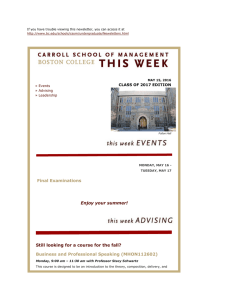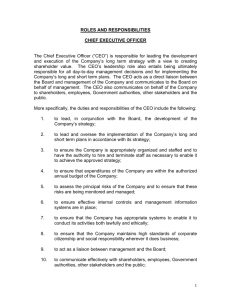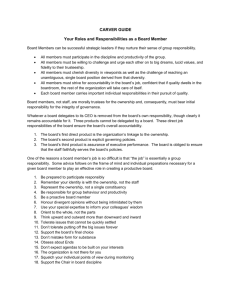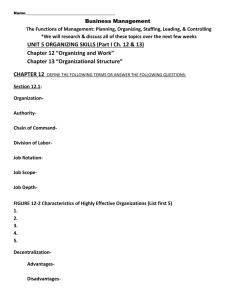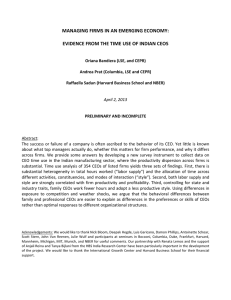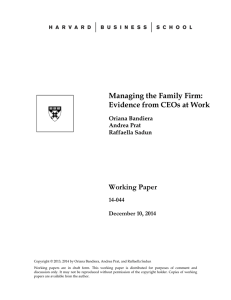Terre Haute Tribune-Star, Progress Monthly, May 2006 “Agents of Fortune”
advertisement
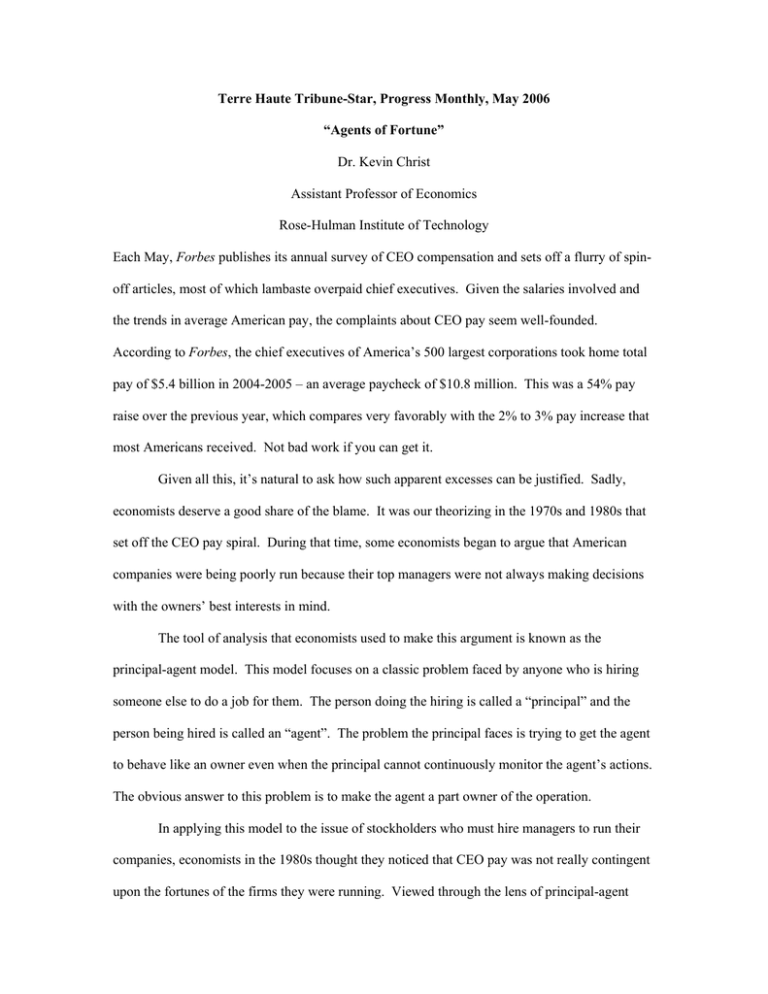
Terre Haute Tribune-Star, Progress Monthly, May 2006 “Agents of Fortune” Dr. Kevin Christ Assistant Professor of Economics Rose-Hulman Institute of Technology Each May, Forbes publishes its annual survey of CEO compensation and sets off a flurry of spinoff articles, most of which lambaste overpaid chief executives. Given the salaries involved and the trends in average American pay, the complaints about CEO pay seem well-founded. According to Forbes, the chief executives of America’s 500 largest corporations took home total pay of $5.4 billion in 2004-2005 – an average paycheck of $10.8 million. This was a 54% pay raise over the previous year, which compares very favorably with the 2% to 3% pay increase that most Americans received. Not bad work if you can get it. Given all this, it’s natural to ask how such apparent excesses can be justified. Sadly, economists deserve a good share of the blame. It was our theorizing in the 1970s and 1980s that set off the CEO pay spiral. During that time, some economists began to argue that American companies were being poorly run because their top managers were not always making decisions with the owners’ best interests in mind. The tool of analysis that economists used to make this argument is known as the principal-agent model. This model focuses on a classic problem faced by anyone who is hiring someone else to do a job for them. The person doing the hiring is called a “principal” and the person being hired is called an “agent”. The problem the principal faces is trying to get the agent to behave like an owner even when the principal cannot continuously monitor the agent’s actions. The obvious answer to this problem is to make the agent a part owner of the operation. In applying this model to the issue of stockholders who must hire managers to run their companies, economists in the 1980s thought they noticed that CEO pay was not really contingent upon the fortunes of the firms they were running. Viewed through the lens of principal-agent analysis, this implied that, as agents hired by stockholder principals, CEOs really didn’t have the right incentives. Two economists closely associated with this view, Michael Jensen and Kevin Murphy, concluded in a 1990 Harvard Business Review article that many American CEOs were paid like bureaucrats. By this they meant that CEO pay was not contingent enough on the fortunes of the companies they ran. Now, while economic theorizing of this sort often doesn’t make it out of the classroom, in this case it did. During the 1990s, stock options became the tool of choice among boards of directors wishing to focus their CEO’s attention more fully on the bottom line. Boards began revising the way they paid their CEOs, placing a lot less emphasis on annual salary, and a lot more on stock options. As this trend developed momentum, advocates of stock options began to make broad claims about their widespread use in CEO pay. Some argued that stock options could actually help explain why the U.S. economy seemed more efficient than, say, European economies, where the practice was not as widespread. In early 1998, The Wall Street Journal proclaimed that high CEO pay “helps the U.S. economy thrive.” It was also during this period, however, that we began to hear about seemingly ridiculous payoffs to CEOs. When Michael Eisner of Disney cashed in stock options worth $570 million in 1997, it was only the most notable of a whole string of CEO payoffs that many people thought were excessive. Others began to notice that stock options were often rigged so that CEOs didn’t really face a lot of risk to their paychecks after all. And as the principal-agent model implies, if pay is not really all that contingent upon the performance of the company, then is the compensation plan really solving the problem it is supposed to be solving? I think there are at least two other question we could be asking. The first has to do with another fundamental idea in economics – diminishing marginal returns. Taking the average CEO pay in last year’s Forbes survey, and assuming that the average hard working CEO worked 12 hours per day every day of the year, the hourly rate of pay turns out to about $2,500. As I read this year’s articles on CEO pay, I will be wondering whether we haven’t long ago passed a point where any additional benefits created by making CEO pay contingent upon stock prices is not far outweighed by the additional costs. The other question is about how we should respond when solid economic reasoning generates outcomes that offend our moral sensibilities. That one, I think, is far more difficult to answer.
